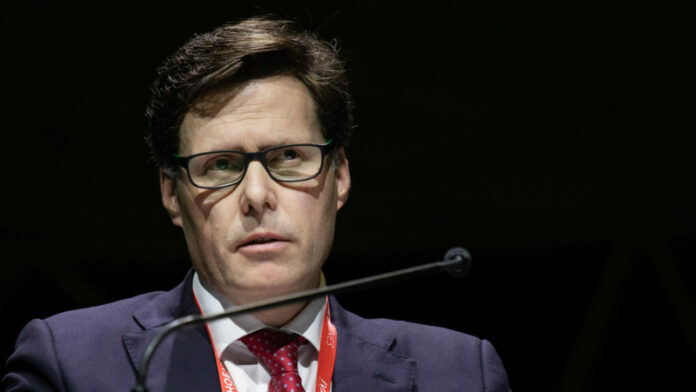
The clock is ticking on Anglo American CEO Duncan Wanblad’s radical restructuring plan. Having promised to simplify the 107-year-old group in as little as 18 months, he must do so amid a complexity not dissimilar to BHP’s proposed takeover.
BHP’s bid was finally rebuffed on May 29, the day on which South Africans voted to end the ANC’s majority rule. BHP could yet return for Anglo at a later stage, along with new, rival bidders — especially if Wanblad fails to deliver. The most daunting part of his plan is the sale of De Beers. The unbundling of its platinum business, Anglo American Platinum (Amplats), for value, is no walk in the park either, even with the possible London listing Wanblad suggested in recent days.
Both transactions are complicated by the dramatic outcome of the national election. Asked about how an uneasily assembled coalition or government of national unity could influence the regulatory procedure of Anglo’s South African divestments, Wanblad tells the FM: “If there are any massive changes, we will have to adapt. We will rely on the institution of government to move it forward.”
Even if Wanblad restructures Anglo as planned, by mid-2026 at the latest, he might not have guaranteed the “next 100 years” for Anglo, as he terms his ambition. While BHP’s takeover proposal failed to entice Anglo’s board into detailed discussions, the Australian firm can at least take comfort from extracting one red line from Anglo. Absent from Anglo’s rejection of BHP’s third proposal was criticism of the proposed share ratio that priced Anglo shares at £31 a share including the South African subsidiaries.
Failure to rerate in two years’ time — BHP’s last proposal priced Anglo without Amplats and Kumba at £21.24 a share, according to a JPMorgan report — would be a blood in the water moment for Anglo. It is now trading at £23.75 a share including the subsidiaries – returning to levels seen before BHP came in for Anglo.
“We think that this new, smaller business would be seen as an extremely desirable group of assets both by investors and potentially by industry participants,” said analysts at Bank of America in a report on May 14.
On May 31, Citi said: “The best defence [Anglo] management can offer in the medium term is to execute flawlessly in operations so as to achieve that rerating rapidly so that potential acquirers balk at valuations.”
What’s certainly clear from BHP’s offer is that mining companies are choosing buying over building new mines. By Anglo’s own estimation, the world’s 20 best undeveloped copper resources containing an estimated 172 million tons of the metal are sterilised mostly by ESG factors, with community and water constraints the key determining factor. Longer permitting timelines as well as supply chain disruption and inflation are leading to increasing capital intensity in copper mine development.
Chasing copper premium
According to Robin Griffin, an analyst at industry consultancy Wood Mackenzie, $700bn in new investment is needed to meet copper demand between now and 2050, of which $450bn is needed before 2040. Wind power, which requires a copper intensity five times that of power station energy, drives most of that investment. All in all, a 2.5% annual increase in copper demand is expected from 2023 to 2033. “You can understand why BHP wants to acquire tier one assets; it doesn’t want to wait,” Griffin says.
Investors are obviously plugged into these expectations. Even producers in the 90th cost percentile are registering 60% margins this year; which means most producers are doing better. It has driven huge investment interest in pure copper producers, to the detriment of the diversified mining group which Anglo, with its platinum, coal and diamonds, typifies. “Despite the strong fundamentals of the diversified miners, they do not currently command the valuations they have seen in the past, or the current valuation of the copper mines,” says Goldman Sachs analyst Matt Greene.
“Additionally, we believe the sector is witnessing an influx of targeted capital seeking clean, single-metal exposure that aims to avoid the complexities associated with understanding a broad spectrum of industrial and consumer commodities,” he says.
Against this background, why wouldn’t larger rivals show an interest in Anglo once it has simplified, especially given plans to grow its total copper production to one million tons in the early 2030s from its current 760,000t a year?
A version of this article first appeared in the Financial Mail.











